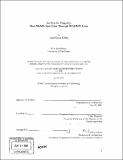| dc.contributor.advisor | Erika Naginski. | en_US |
| dc.contributor.author | Kivlan, Anna Karrer | en_US |
| dc.contributor.other | Museum of Modern Art (New York, N.Y.) | en_US |
| dc.date.accessioned | 2008-02-12T16:48:07Z | |
| dc.date.available | 2008-02-12T16:48:07Z | |
| dc.date.copyright | 2007 | en_US |
| dc.date.issued | 2007 | en_US |
| dc.identifier.uri | http://dspace.mit.edu/handle/1721.1/39314 | en_US |
| dc.identifier.uri | http://hdl.handle.net/1721.1/39314 | |
| dc.description | Thesis (S.M.)--Massachusetts Institute of Technology, Dept. of Architecture, 2007. | en_US |
| dc.description | Includes bibliographical references (p. 67-71). | en_US |
| dc.description.abstract | This thesis is an examination of the 1976 Museum of Modern Art exhibition of color photographs by William Eggleston-the second one-man show of color photography in the museum's history- with particular attention to the exhibition monograph, William Eggleston's Guide. From hundreds of slides, MoMA Director of Photography John Szarkowski dominated the process of selecting the 75 images for the exhibition and 48 to be carefully packaged in the Guide, a faux family photo album/road trip guidebook. It is my contention that, despite their verbal emphasis on the Modernist and universal (rather than Southern) nature of the images, the photographs can be read as being replete with the mythology of the Old South- its decay, vulgarity, and even horror. Through this act of manipulation, the images in the Guide appealed in a voyeuristic way to an elite Northern art world audience, ever eager to reinforce its own intellectual, economic, and ethical superiority over other parts of the country. Due to its presumed "vulgarity" and absence of aesthetic mystique at the time, color photography required for its inaugural moment at the museum a sharp distancing from the documentary tradition and advertising-the complete erasure of social context afforded by a Modernist aesthetic. | en_US |
| dc.description.abstract | (cont.) The two-faced posture maintained by the curator and photographer combined a canny understanding of the cultural power of the images with an overtly Modernist disavowal of it. | en_US |
| dc.description.statementofresponsibility | by Anna Karrer Kivlan. | en_US |
| dc.format.extent | 71 p. | en_US |
| dc.language.iso | eng | en_US |
| dc.publisher | Massachusetts Institute of Technology | en_US |
| dc.rights | M.I.T. theses are protected by copyright. They may be viewed from this source for any purpose, but reproduction or distribution in any format is prohibited without written permission. See provided URL for inquiries about permission. | en_US |
| dc.rights.uri | http://dspace.mit.edu/handle/1721.1/39314 | en_US |
| dc.rights.uri | http://dspace.mit.edu/handle/1721.1/7582 | |
| dc.subject | Architecture. | en_US |
| dc.subject | Museum of Modern Art (New York, N.Y.) | en_US |
| dc.title | An eye for vulgarity : how MoMA saw color through Wild Bill's lens | en_US |
| dc.type | Thesis | en_US |
| dc.description.degree | S.M. | en_US |
| dc.contributor.department | Massachusetts Institute of Technology. Department of Architecture | |
| dc.identifier.oclc | 173314799 | en_US |
